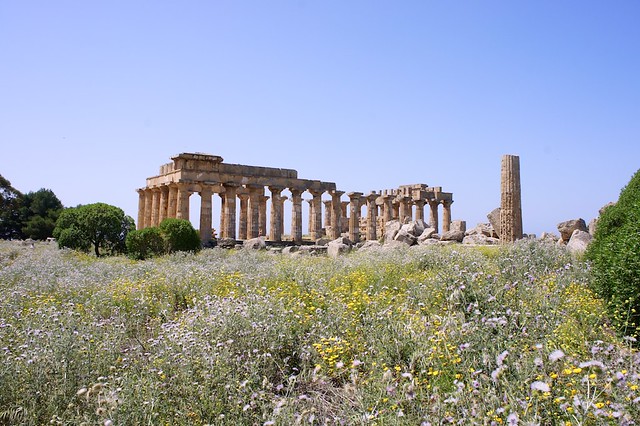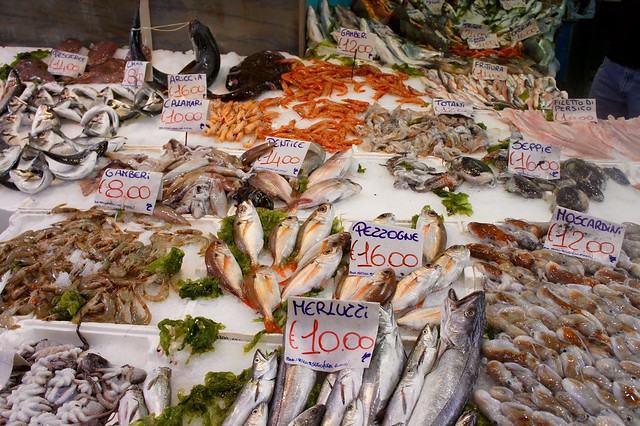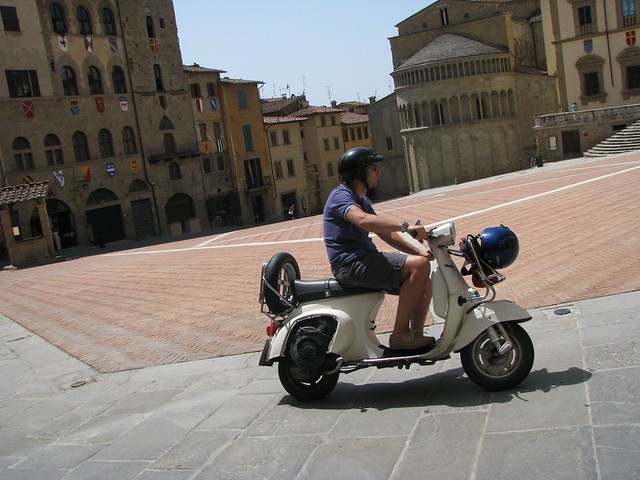Traveling to Italy during Covid-19: What you need to know before you go
6 Reasons Why You Should Visit Italy
As Italy opens its restaurants and shops after 70 days , we are counting down the days when we can visit the European country. With its natural beauty, incredible food, art, and style, Italy is a destination where even one visit is not enough. You will definitely come back for more, for its velvety tiramisu, piping hot melting cheese of a fresh pizza, the smooth cold taste of gelato, the perfect Instagram filter-like golden glow of Venice, the very elegant style of roman boutiques, sunlight spilt across olive trees. These are a few of the many reasons why people love Italy so much. If, like us, you are also planning to book your tickets to Italy as soon as possible, here are more reasons to sweeten the deal for you. And wondering where your next world adventure should start? Check out the reasons wh y you should visit Italy after the pandemic. Its natural beauty, incredible food, art, and style are just the tip of the iceberg. So, why should everyone visit the famous boot-shaped country? For more details, check natvisa.com
Here Are The Reasons Why You Should Visit Italy In Future
Every Nook And Corner Is Full Of History

Italy’s history rolls back millennia. As soon as you step on Italian soil, you will spot its ancient history and culture everywhere. Historic Italian cities such as Rome will show you gigantic traces of a mighty ancient empire, the Papal kingdom, and Renaissance noble families, while smaller cities like Florence will take you through the Middle Ages. You’ll also find Middle Age imprints in the towns of Viterbo, Bracciano, Perugia or Venice. Sardinia, on the other hand, is home to the Nuraghe stone towers from the Bronze Age, and villages belonging to the Mediterranean island’s ancient civilization.
As Italy’s unification or Risorgimento into a single state of the Kingdom of Italy occurred relatively early in the 19th century, the diversity of its small states and kingdoms is intact. They might speak the same language, but every region has its own dialect, cuisine, history, culture, and specific tradition. Try the Pizza Napoletana in Campania, “Naked” ravioli with ricotta and spinach in Tuscany among the many regional dishes that Italy has to offer. The diversity of its culture and its huge historical heritage are just some of the many reasons why people love Italy .
Rich Legacy Of Both Art And Architecture

Over the years, Italy’s rich legacy of art and architecture has seduced many. Stretching back to before Roman times and continuing today, the country is filled with many architectural and artistic treasures. Every epoch has its treasures and devotees, but the country is known for its wonderful artists, architects, engineers, and inventors, who changed the world. Have a look at Michelangelo’s ‘Pieta’ and ‘The Last Judgment’, Leonardo da Vinci’s ‘Renaissance Man’ or Titian’s ‘Venus of Urbino’ to marvel at their artistic genius or soak up some culture.
The country is a haven for anyone that wishes to explore architecture and design over centuries. These pieces are on every bit of street or road you might find yourself in; in fact, it’s impossible to move around without bumping into a piece of history. A few of the most famous pieces of art include Florence’s elegant streetscapes, the beautifully preserved Colosseum in Rome, the incredible painted ceiling of the Sistine Chapel and the perfect marble dome of St Peter’s Cathedral in Vatican City, Venice’s beautiful arched bridges over its canals, the postcard-perfect tiers of colourful cottages of Positano just a shortlist of what Italian art and architecture have to offer.
A Country With Most World Heritage Sites In The World

If you are counting the number of World Heritage Sites, we can give you 55 reasons you should visit Italy . Yes, the small country of Italy is home to more UNESCO World Heritage Sites than any other European country in the world. Of its 55 sites, 50 are cultural and five are natural. As the birthplace of the Roman Empire and the Renaissance, Italy is home to Pompei, Herculaneum and Torre Annunziata, historical centres of Florence, Naples and Rome and the Dolomites. Explore the preserved ruins of the ancient Roman cities of Pompeii and Herculaneum which were buried by the eruption of Vesuvius in A.D. 79.
Immerse Yourself In The Beauty Of Landscapes

The natural landscapes that this country offers are truly magnificent. You will see diversity everywhere you go, from majestic mountains and picturesque lakes to sunny coastlines and stretches of dark green woods. Their mesmerising views are just a few one of the reasons why you should visit Italy.
Catch the Dolomites in the northeast, the snow-capped Italian Alps in the north, where you can hike, bike or ski. The 18 peaks of the Dolomites, rising above 3,000 metres, and covering 141,903 hectares will offer you the most beautiful mountain landscapes anywhere, with vertical walls, sheer cliffs and a high density of narrow, deep and long valleys.
Discover Italy’s magnificent lakes that are dotted among the valleys of these stunning mountains. Don’t miss the lakes set in the north, lakes Como, Maggiore and Garda surrounded by green mountains and wonderful hills. Tired of mountains and lakes? Get lost in the fragrant orange groves of Sicily, get drunk in the vineyards of Tuscany and Lazio, and hike through millennia-old rock-cut homes and churches in ravine-cut lands of Basilicata.
A Paradise For Your Mouth

Italian cuisine needs no introduction. It’s a favourite for most people around the world. A visit to Italy, of course, guarantees authentic delights of more than just your comfort foods of pizza and pasta. While different regions of Italy have their own specialities, no matter where you go, you will not be disappointed. Enjoy the fresh markets in every region with its new flavours, recipes (according to region), ingredients, cheese (such as Pecorino or Fossa cheese), bread (such as Focaccia or Coppia Ferrarese), sauces (such as carbonara or pesto) and kinds of pasta (there are around 350+ different kinds of pasta!). And wherever you go, you will find gelato everywhere. This quick afternoon snack is a cold creamy treat that you shouldn’t miss out. And don’t forget to explore the rich and bold flavours of Italian coffee culture, maybe with an espresso after dinner?
Of course, no Italian meal is complete without a good house wine. With its many different grape varieties, it’s no surprise that Italy has surpassed France in the amount of wine it produces. When you get to visit Italy , don’t forget to sample its local wines that are delicately and perfectly paired with their great dishes.
Explore The Longest Coastline In Europe

The pristine coastlines of Italy are washed by the waters of five seas: The Mediterranean, Adriatic, Ionian, Tyrrhenian, and Ligurian. You are never too far from a beach, as almost all of the 20 Italian regions (except Umbria) have access to the sea. So, enjoy an unparalleled summer holiday, lounging on beaches, tucking into fresh seafood, while admiring the beauty of the emerald blue sea. No matter what your beach style is, lavish resorts or rustic and historic sites, you will find a spot to meet all your demands and tastes.
So, When Are You Planning To Travel To Italy?
Italy is filled with riches. It offers you spectacular cities, ancient ruins, wonderful museums, soaring mountains, great beaches, and beautiful natural scenery – all packed in one. No wonder, it features in the bucket lists of a lot of people. Still, need reasons why you should visit Italy ? How about the food? The wine? The wonderfully hospitable people, with their large hearts? We might not be able to travel immediately due to the pandemic, but as soon as it’s safe, a visit to ‘the Boot’ should feature on your wanderlust list.
Traveling to Italy during Covid-19: What you need to know before you go

Editor’s Note — Coronavirus cases are in flux across the globe. Health officials caution that staying home is the best way to stem transmission until you’re fully vaccinated. Below is information on what to know if you still plan to travel, last updated on October 6.
(CNN) — If you’re planning to travel to Italy, here’s what you’ll need to know and expect if you want to visit during the Covid-19 pandemic.
The basics
Italy has had some of the toughest restrictions on the planet during the pandemic, and is still one of the most cautious countries in Europe, despite a relaxation of most rules.
Since June 1, all Covid-19 entry regulations have been dropped. This means that you no longer have to show proof of vaccination for entry, and also quashes the previous quarantine requirement for non-vaccinated arrivals. It dropped its mask mandate in almost all settings on October 1.
What’s on offer in Italy
This is one of Europe’s big travel hitters, known for its historic cities of art such as Florence, one-off wonders such as Venice and the seat of the Roman Catholic Church at Vatican City, situation inside Italy’s capital of Rome.
Incredible food, fantastic wine, unspoiled countryside and a string of beach resorts mean it’s always in demand.
Who can go
Since June 1, the Covid-19 entry regulations have been dropped. Everyone can enter Italy now, and arrivals no longer have to show vaccination status, meaning that the quarantine requirement for the unvaccinated no longer exists.
What are the restrictions?
Arrivals no longer have to fill out a passenger locator form, either. The mask mandate has been removed from flights, although it is still in place on other forms of public transport (see below). Individual airlines, however, can still enforce their own mask requirement — check yours before you board.
What’s the Covid-19 situation?
As the first hit European country, Italy has been through a lot. Restrictions have consistently brought things under control, with Italy holding out longer than European neighbors in each subsequent wave. However, the winter waves of 2020-21 and 2021-22 have taken huge tolls.
Italy holds Europe’s second highest death toll (after the United Kingdom), passing the milestone of 100,000 deaths on March 8, 2021. Over 22.6 million people have been infected to date, with the death toll at 177,300 as of October 6, 2022.
With the arrival of the Omicron variant, case numbers soared. Cases reached a record high the week of January 10, with 1,269,976 cases recorded. Before Omicron, the record infection rate for the pandemic was 248,000 infections in a week, registered in November 2020.
Numbers took another sharp rise in June and July with the newest variants. Nearly 1.4 million new infections were registered in the month leading up to August 19. This has now subsided again. A total of 252,781 new infections were recorded in the week leading up to October 6.
What can visitors expect
The color-coded traffic light restrictions by region (from white to red zones) were abolished April 1. The rules are now the same countrywide.
The nationwide outdoor mask mandate ended on February 11, and the widespread indoor mask mandate on May 1. On June 15, the restrictions were eased again, and October 1, the mask mandate on public transport was removed.
However, masks are still mandated in hospitals, medical settings and care homes. Masks must be high-grade FFP2 level, except for in hospitals.
While it is no longer mandatory, the government recommends still wearing masks indoors, and many — if not most — Italians continue to wear them. Additionally, individual venues, including galleries and museums, may impose their own mask mandates. If caught not wearing a mask where it is mandated, you can be fined up to $450.
If you catch Covid in Italy, you will face a minimum five-day quarantine. You may only leave quarantine after testing negative and being symptom-free for two days. If you still test positive after 14 days, you may leave quarantine.
On May 1, the government dropped the requirement to show a green pass everywhere a tourist would want to go. That means you no longer need to show proof of vaccination to eat out, visit galleries or take public transport.
However, if you end up visiting a hospital or care home you will need a “super green pass” or “certificazione verde rafforzata,” showing that you have been vaccinated (including a booster) or have recovered from the virus within the past six months. A regular pass can also be obtained by a negative test within 48 hours.
Those vaccinated in other countries are not eligible for the Italian pass, but EU vaccination passes are recognized and scanned as domestic ones are. Those holding a certificate with a QR code — including UK NHS certificates — can normally have their passes read as an Italian one. Check whether yours is valid by downloading the VerificaC19 app.
If your QR code is not recognized by the app, or you don’t have one, you must show a paper copy of your certificate from your home country.
Foreign vaccine certificates are not subject to the same time limits as Italian green passes. For now, a full cycle including booster is valid indefinitely. A full initial cycle with no booster is valid six months.
5 Reasons Why You Shouldn’t Visit Italy
Italy is one of the most popular vacation destinations on the planet, a haven for millions who swoon for its cuisine, culture, and climate. Though the Bel Paese is our first love, we know that it may not be for everyone …Italy poses unique challenges and hurdles that may be daunting for a first-time visitor.

(Photo by CIUTravel via Flickr)
So, how do you know if you should set your sights on Italy for your next trip? Here are a few reasons why you may want to take a pass… (We’re just kidding…never pass up on Italy! Here’s how to make the trip a delight for even the most cagey visitor…)
I’m not really into history
Let’s face it, Italy is imbued with history from the spectacular Greek temples of Sicily and ruins of Pompeii to the iconic architecture of Rome’s early-20th-century EUR district. If you find wandering historic sites dry and unremarkable, the idea of a vacation destination where they play a central role may be less than appealing.

(Photo by CIUTravel via Flickr)
That doesn’t mean, however, that Italy is a hard no. An itinerary where the landscape is the headliner and historic sites are presented in small, palatable doses (the Amalfi Coast or Dolomites are good examples) is an easy remedy, as is ample use of Italy’s best kept secret: official tour guides.
Italy has arguably some of the best guides in the world, who study for years to become licensed and make it a life-long career. By booking a private guide to visit medieval churches, ancient archaeological remains, and even entire storied towns, you get a fascinating glimpse behind the stones and grass, and are treated to an engaging explanation of their historic and cultural significance woven with little-known historic tidbits, anecdotes, and legends. Even kids perk up with tales of gladiators and court intrigue when told with the panache of an experienced guide.

(Photo by CIUTravel via Flickr)
So, not a history buff? No worries! Head to the coast or mountain peaks, take in Pompeii or alpine battlefields with a guide, and you’re good to go.
I can’t take the heat
Italy is hot in summer. There’s no getting around it, despite your best sartorial efforts. There may be a bit of respite on the alpine peaks in the north, but the cities, coastline, and Mediterranean countryside can be scorching from late June through August, and there is little escape in this air-conditioning-adverse country.
If you wither in the heat, Italy may not be the best summer destination for you…but that’s actually good news! By far the best seasons to visit the Bel Paese are spring and fall, not only to avoid the soaring temperatures but also the worst of the crowds and highest prices.

(Photo by CIUTravel via Flickr)
Consider a shoulder season holiday (May or September/October are our favorite months) rather than a trip during the height of summer, savoring the milder temperatures and long hours of daylight to take in sights and monuments, dine al fresco, and even spend a day at the beach or at sea on particularly warm days. If you’re a winter traveler, you can opt for a trip during the low season, with a few caveats. Stuck with vacation time that you can only take during July or August? With our tips and tricks, you can survive even the worst Italian heatwave.
I don’t like crowds
Ugh, the crowds. They can seem unrelenting in compact historic centers like Florence and Venice, and the “off-the-beaten-path” movement has meant that even the quiet residential corners of Rome have been infiltrated. If you can’t stand being packed shoulder-to-shoulder in churches and city streets, the Vatican and St. Mark’s square are not for you.
Are crowds inescapable in Italy? Of course not! The worst crowds are centered around the Big Three (Rome, Florence, and Venice), and destinations on major cruise routes (Salerno/Sorrento and nearby Amalfi Coast, Genoa/La Spezia and Cinque Terre, Venice and Venice)…branch out from those hot spots and you’d be surprised how easy it is to visit some of the most spectacular areas of Italy with crowds that are either manageable or non-existent.

(Photo by CIUTravel via Flickr)
Have your heart set on the major capitals and coastline? You can still enjoy a trip that avoids the worst of the crowds. Choosing a shoulder season is always a good idea, as is touring with a guide to explore the back streets and hidden jewels in the most popular destinations. Coastal headliners like the Amalfi Coast and Cinque Terre are best explored by water, so you can hop between the towns without having to take on the overtaxed roads and rail lines. And, of course, there’s the vast expanse of quieter regions like Umbria, Piedmont, or Puglia that are a welcome oasis for those looking to escape the tour bus hordes.
I’m not a fan of pasta and wine
Pasta and wine are undeniably two pillars of Italian cuisine, but there are endless choices for dining and imbibing in Italy without having to limit yourself to heaping plates of spaghetti and flowing bottles of red and white wine. Trying to keep the “pasta belly” reined in? Are more of a cocktail or beer drinker? Book your ticket, because Italy has you covered.
Much of the north of Italy is known more for its rice and polenta dishes than for its pasta, and local cheeses, cold cuts, and seasonal fruit and vegetables about across the country. The north and center of Italy are also known for their heirloom beef and pork; the south and along the coast for its excellent fish and seafood.

(Photo by CIUTravel via Flickr)
Though wine historically reins supreme in Italy, the last ten years have seen an explosion in quality micro brews, especially easy to find in Rome and the north. These outstanding artisan beers are worth seeking out even for oenophiles, and are found increasingly on restaurant menus as well as old-school bars and pubs. Like your drink shaken, not stirred? Cocktail culture has taken Italy by storm, and in addition to the Italian stand-bys, you can now find creative signature drinks and international classics at hipster-friendly aperitivo bars and cocktail lounges in any medium and large city.

(Photo by CIUTravel via Flickr)
Those Italian drivers!
Italian drivers have a bit of a reputation, and taking to the road in Italy gives pause to even the most seasoned travelers. The country’s casual attitude towards the rules of the road, unfamiliar signage, and traffic that can be both heavy and fast make renting a car in Italy a bit of a conundrum.

(Photo by CIUTravel via Flickr)
If you don’t feel comfortable driving in Italy, just avoid it all together. You can easily stick to the walkable medium and large cities for all or most of your trip, occasionally striking out with a private car service to experience the rural wineries, village hop, or take in the northern lakes or southern archaeological sites.
In addition, Italy’s Freccia high-speed trains are an excellent alternative to travel between the major cities, as they run non-stop, have guaranteed schedules, and comforts like wifi and lounges. To travel between smaller towns and villages, the best alternative is a private driver who is often also a fantastic source of local tips for dining, shopping, and touring.
I hate to plan vacations
If even the thought of trip planning stressed you out, contact us and we’ll make sure you have the Italy experience you’ve always wanted, hassle-free!
Still not convinced that Italy is the place for you? No problem…maybe Switzerland is where you should set your sights…
Source https://travel.earth/reasons-why-you-should-visit-italy/
Source https://www.cnn.com/travel/article/italy-travel-covid-19/index.html
Source https://ciutravel.com/5-reasons-not-to-visit-italy/